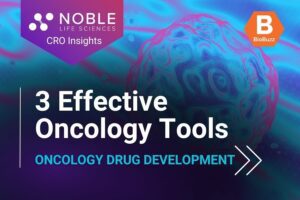
In Conversation with Kevin Hannigan, President of Lab Owl®/Automated Control Concepts, Inc.
Personalized and regenerative medicines are promising but they are complex to develop and require highly-flexible advanced manufacturing techniques that are still too manually intensive and costly.
Only a handful of cell and gene therapies have been brought to market because of their development and manufacturing complexity, and those therapies that have been approved by the FDA have limited impacts because of supply chain challenges and the high development costs that are eventually passed on to patients. Lab automation and controls will play a critical role in streamlining development and increasing the number of these therapies that are approved and commercialized.
Lab automation and bioreactor controls will help simplify development, standardize manufacturing, and drive down costs, which are three of the biggest drivers for commercializing more personalized and regenerative medicines that truly revolutionize public health.
Lab Owl® is a quickly growing lab automation and controls company that is working with startups, emerging, and well-established life science companies to overcome these challenges. Their product, Lab Owl®, is a flexible, fully integrated, remote access bioreactor control and information system for cell culture, fermentation, regenerative medicine, and cell and gene therapy applications. Lab Owl® features an easy-to-use interface for bioreactor automation and process control that is highly adaptable and has been used in applications ranging from development labs operating bench-top parallel bioreactors to pilot plants and manufacturing operations.
Drug development automation and control is a hot topic of discussion across a wide range of fields, including traditional biotech as well as the rapidly emerging cell and gene therapy and regenerative medicine industries.
We thought this was an opportune time to connect with Kevin Hannigan, President of Lab Owl® and its parent company Automated Control Concepts, Inc. (ACC), to discuss Lab Owl® and how it can help companies of all sizes improve lab, drug development, and manufacturing performance.
Tell us about your career path leading up to becoming the President of Automated Control Concepts, Inc., and Lab Owl®.
The opportunity to join ACC arose early in my career. I was excited by the chance to combine new and proven automation technologies to deliver strong and innovative solutions to ACC’s customers. Having been on the customer side, I understood the importance of listening and understanding my customer’s requirements. That combined with my passion for technology and ability to develop deep relationships with my customers led to me becoming the point person for many of ACC’s new customers and large projects. I led ACC’s life sciences projects that cemented ACC as a trusted and respected solutions provider in the industry (including large scale projects with Merck, Pfizer, and Medimmune/AstraZeneca) and ultimately transitioned into a role establishing and executing ACC’s strategies for expansion including the development of our product offerings.
What is the story behind the development of the Lab Owl®, how has the system evolved and improved over time, and what are its current core capabilities?
Lab Owl® began as a project for what was then MedImmune’s Process Cell Culture and Fermentation (PCC&F) development lab. They had 80 bioreactors that were utilized by 30 scientists across various areas of focus. The scientists recognized that the antiquated, manual processes they were using were not working efficiently. A few years before, ACC had completed a highly successful process control project utilizing Rockwell Automation’s platform for MedImmune’s pilot plant which led to us leading the automation efforts at the Frederick Manufacturing Facility and ultimately being referred to the PCC&F lab to come up with a new bioreactor control solution. These projects eventually became Lab Owl®.
Once we understood the bioprocessing world from development lab to manufacturing, we realized that all the skills and techniques we had developed over the years for large biotechnology companies on their projects also had value for smaller startups and emerging companies. In addition, we were able to incorporate all the mandatory compliance standards for GMP operations so a Lab Owl® solution could grow with these startups and early-stage companies as their compliance requirements grew.
At the core of Lab Owl® are off-the-shelf control elements based on Rockwell Automation technology, which is widely used in manufacturing. That means the internal components are easily understood and maintained by the teams that use them, making integration easier and faster. On the software side, we used an application platform that was more flexible, scalable, allowed for remote access, and had integrated web capabilities.
All of this demonstrates Lab Owl®’s key value propositions—being able to deploy the same system for both larger end-users with strict compliance requirements and smaller customers needing simplicity and ease of use and being an agile, flexible, and scalable solution that can be utilized in a variety of capacities to meet ever changing needs.
Lab Owl® might seem like a smaller company on the surface, but it is backed by ACC. Why should this matter to life science companies seeking a bioreactor automation and control system?
ACC has 30+ years of experience with life science regulatory and quality regulations. These are concepts that have been woven into ACC’s way of working throughout its entire history. ACC understands the requirements that make automation and information systems validatable. That knowledge is fully embedded into Lab Owl®. In essence, while Lab Owl® might seem like a new product, it was created over ten years ago with the benefit of ACC’s thirty years of life science and automation product experience and knowledge.
What are some of the biggest challenges facing startups and emerging life science companies when it comes to lab performance and how does Lab Owl® help overcome them?
Scaling their process, tight budgets, and quality compliance are the primary challenges we see.
Lab Owl® combines standard Rockwell components and flexible, agile software to deliver a powerful product that can solve our customers’ problems at a reasonable cost. These hardware and software platforms are often used in pilot and manufacturing operations and use many of the control algorithms often found there. Scaling the process becomes easy as a result of this and the fact that all experiment parameters and settings are recorded during operation and easily exported along with process values making their translation to larger scale processes straightforward.
Lab Owl is also independent of any individual bioreactor vessel so it can connect to any vessels or sensors a customer might have or might want to add to their lab. As a result, a startup company that purchases used equipment can easily and cost effectively have a state-of-the-art control and information system by adding Lab Owl® with relative ease.
Most importantly, Lab Owl is built with a full historian, audit trail and security integration features that meet our customers compliance needs as they grow. And documentation such as Functional Specifications, Factory Tests and IOQs are available for systems that require validation.
Talk to us about the Lab Owl® technical team and how they are able to consistently integrate the Lab Owl® bioreactor automation and control system seamlessly into any existing lab setup.
Our entire staff is customer-focused and values our customer relationships. We approach every engagement by first identifying and understanding a customer’s requirements, and then taking the time and care to best meet or exceed their expectations to help their operation run more effectively. Our team also spends time building custom bioreactor control systems at the pilot and manufacturing scale and can understand the integration needs in the lab and anticipate our customer’s future needs.
Lab Owl® is a member of the Advanced Regenerative Manufacturing Institute, also known as ARMI. Talk to our audience about how the Lab Owl® is being deployed in ARMI’s push within its Tissue Foundry lab to revolutionize tissue engineering development and manufacturing.
ARMI had the goal of fully automating tissue manufacturing. This required the system to be closed and have no human interaction after being started.
This was perfectly suited to what Lab Owl® does, and we became a fundamental piece of that automation puzzle for ARMI. Lab Owl® can interface and communicate easily with other systems so the hand-off process from one cell culture stage to another can be seamless, and the macro capability allows labs to create repeatable process recipes to achieve this closed-loop, automated tissue manufacturing environment.
Automation, macros, and recipes remove the possibility of human error and this is what Lab Owl®, in conjunction with the consortium’s other partners, can help ARMI achieve for tissue engineering.
How has the Lab Owl® helped its customers manage labs and keep experiments moving forward during the pandemic?
In today’s COVID-19 environment, there is even a greater need for remote collaboration. Everything is moving faster because of the pursuit of a COVID-19 vaccine, and as a result, we have been brought into situations where customer A is developing a vaccine and customer B will be producing it. Lab Owl® provides the bridge between these two customers that provides real-time, remote data access that will help ensure batch production goes smoothly every time.
Lab Owl®’s notification capability alerts a user if something is wrong as well as providing the ability to correct the problem remotely. You can correct issues and also extract and analyze data all from the convenience of your home, ideal during these challenging times when employee safety is paramount for scientists and other key personnel to keep these critical projects moving forward even when they are not or cannot be physically on-site.
What new features or capabilities are on the horizon for Lab Owl®?
We are always looking to the future and thinking about how we can improve Lab Owl® to better meet customer needs. We are releasing a new macro engine in January, which maintains the simplicity of the experience but adds advanced features such as parameters, loops, calculations, and subroutines for users who are more programmatically inclined.
Later in 2021 and early 2022, we’re planning the launch of a cloud-based Lab Owl® command center where users can manage, view and collect data from all their systems, and see improvements to trending and the addition of pre-defined reports.
Last, we plan to migrate our clients to a browser and phone app in 2022 which will take our product to the next level and make it the go-to standard of choice.
- About the Author
- Latest Posts
Steve brings nearly twenty years of experience in marketing and content creation to the WorkForce Genetics team. He loves writing engaging content and working with partners, companies, and individuals to share their unique stories and showcase their work. Steve holds a BA in English from Providence College and an MA in American Literature from Montclair State University. He lives in Frederick, Maryland with his wife, two sons, and the family dog.





